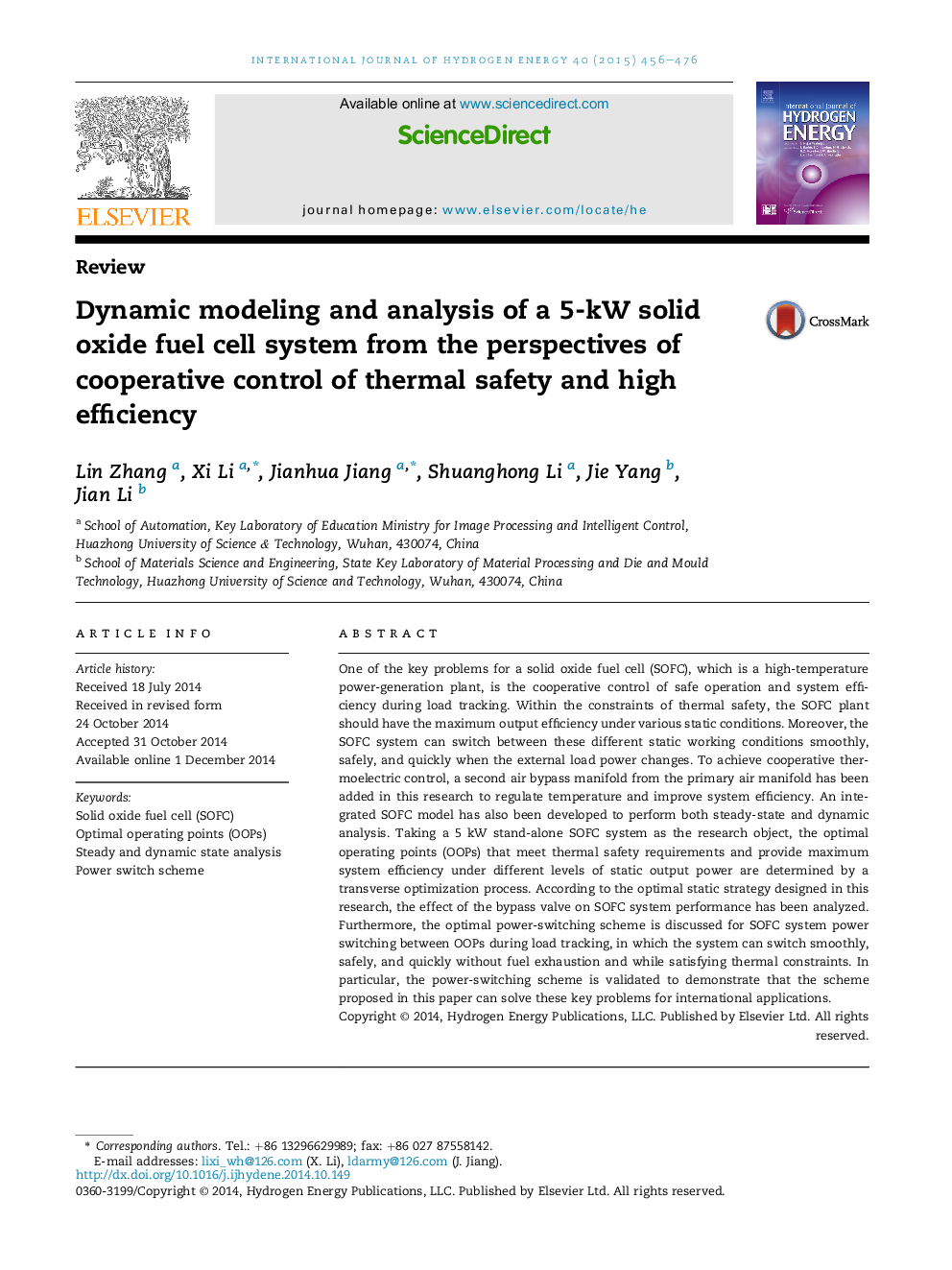| Article ID | Journal | Published Year | Pages | File Type |
|---|---|---|---|---|
| 7717074 | International Journal of Hydrogen Energy | 2015 | 21 Pages |
Abstract
One of the key problems for a solid oxide fuel cell (SOFC), which is a high-temperature power-generation plant, is the cooperative control of safe operation and system efficiency during load tracking. Within the constraints of thermal safety, the SOFC plant should have the maximum output efficiency under various static conditions. Moreover, the SOFC system can switch between these different static working conditions smoothly, safely, and quickly when the external load power changes. To achieve cooperative thermoelectric control, a second air bypass manifold from the primary air manifold has been added in this research to regulate temperature and improve system efficiency. An integrated SOFC model has also been developed to perform both steady-state and dynamic analysis. Taking a 5Â kW stand-alone SOFC system as the research object, the optimal operating points (OOPs) that meet thermal safety requirements and provide maximum system efficiency under different levels of static output power are determined by a transverse optimization process. According to the optimal static strategy designed in this research, the effect of the bypass valve on SOFC system performance has been analyzed. Furthermore, the optimal power-switching scheme is discussed for SOFC system power switching between OOPs during load tracking, in which the system can switch smoothly, safely, and quickly without fuel exhaustion and while satisfying thermal constraints. In particular, the power-switching scheme is validated to demonstrate that the scheme proposed in this paper can solve these key problems for international applications.
Keywords
Related Topics
Physical Sciences and Engineering
Chemistry
Electrochemistry
Authors
Lin Zhang, Xi Li, Jianhua Jiang, Shuanghong Li, Jie Yang, Jian Li,
